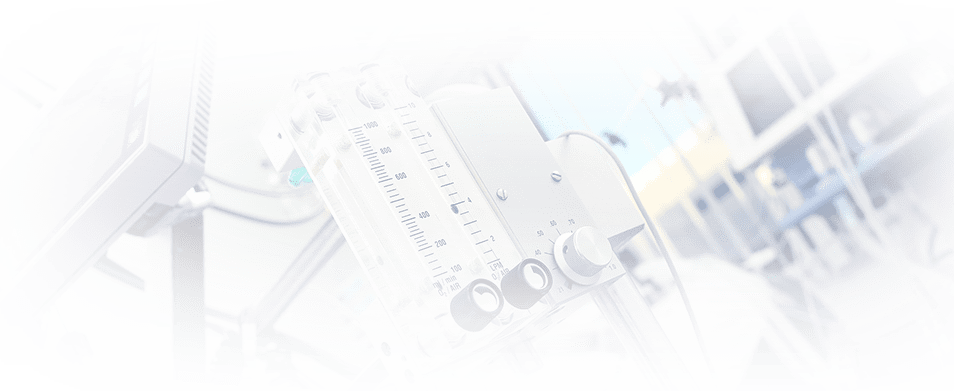Cardiology - Clinical case No. 2
Clinical review
Patient I., 68 years old.
Complaints
He was admitted to BIT JSC Medicine on 03/15/2017 with complaints of palpitations of up to 120-130 per minute, shortness of breath with minimal physical exertion, weakness, edema of the lower extremities.
Medical history
- I suffered from rheumatism as a child. For a long time, an increase in blood pressure is noted, up to a maximum of 170/100 mm Hg. Adapted to 130/80 mm Hg. st.
- Denies myocardial infarction.
- Deterioration of the condition since the end of January 2016, when, against the background of the acute respiratory viral infection, he began to notice an increase in shortness of breath, weakness. He has been taking cycloferon since early February.
- 02/13/2016 in connection with the persisting deterioration turned to JSC "Medicine" performed CT scan of the chest organs: CT picture of bilateral polysegmental bronchopneumonia. Mediastinal lymphadenopathy. Calcifications in s10 of the right lung. Bulla in the middle lobe of the right lung.
- A course of intravenous drip infusions of rocefin 2 gr No. 10 was carried out, against which he noted an improvement in his condition. He has been taking Ingavirin since the end of February.
- Another deterioration since the beginning of March 2016 - shortness of breath increased again, palpitations of up to 120-130 per minute and swelling of the lower extremities appeared. During examination at JSC "Medicine" 03/15/2016: ECG - tachysystolic form of atrial fibrillation, diffuse changes in the left ventricular myocardium. Echocardiography - moderate LV hypertrophy, dilatation of all cardiac cavities, significant pulmonary hypertension up to 70 mm Hg, decrease in ejection fraction to 46% CT of the chest organs - CT picture of positive dynamics of bilateral polysegmental bronchopneumonia. Mediastinal lymphadenopathy. There is a negative trend in the form of effusion in the pleural cavities. CT picture corresponds to interstitial pulmonary edema. Aortocoronarosclerosis.
- Due to the deterioration of his condition on 03/15/2017 he was hospitalized in the BIT of JSC "Medicine".
Status Praesens
- Condition on admission of moderate severity.
- Skin: pale, warm, dry. Visible mucous membranes: pale, clean, moist, shiny. Musculoskeletal system without visible pathology. Lymph nodes were normal. Swelling of feet, legs.
- Breathing freely through the nose. Respiration rate 18 in 1 min. The rib cage is cylindrical in shape, evenly participates in the act of breathing. Painless on palpation. When percussed, pulmonary sound over the entire surface of the lungs. The boundaries of the lungs are not changed. On auscultation: hard breathing, weakened in the lower parts on both sides, against this background, unvoiced moist fine-bubbling rales are heard.
- There is no pathological pulsation in the region of the heart, vessels of the neck and epigastrium. On auscultation, heart sounds are muffled, the rhythm is abnormal, systolic murmur at the base of the heart. Pulse 128 beats. per minute, the rhythm is incorrect, satisfactory filling and tension. HR = HR = 70 beats / min. BP 190/100 mm Hg.
- Appetite is normal. The tongue is moist and clean. The abdomen of the correct shape, not swollen, participates in the act of breathing evenly. On palpation, it is soft, painless. Percussion-free fluid and gas in the abdominal cavity is not detected. Auscultatory peristalsis is heard. The liver protrudes 1 cm from under the costal arch. The edge of the liver on palpation is dull, elastic, painless. Spleen: not palpable.
- There are no dysuric disorders. The kidney area is not visually changed. Beating symptom negative on both sides.
Data of laboratory and instrumental research
Clinical blood test - hypochromic, hyperregenerative anemia with a minimal decrease in hemoglobin up to 91 g / l, leukocytosis up to 12-13 g / l, lymphopenia up to 4%.
B \ x blood tests - C-RB 33-70-60, an increase in the level of creatinine up to 158, troponin - 1.2-1.3-2.1 ng / ml with normalization over time, reverses an increase in the level of MV-CPK up to 29 -31 with subsequent normalization, with a normal level of total CPK, the level of electrolytes is normal.
D-dimer is positive.
PSA is normal. ASLO, RF unchanged. Serum iron levels are normal, a significant increase in ferritin up to 1936 (normal up to 400), a decrease in the level of TIBC. Pronounced increase in IgG titer to cytomegalovirus, moderate increase in AT titer to Epstein-Barr virus.
Since 03/17/2016, an increase was noted in the blood test: ALAT 608.1 U / l ASAT 560.8 U / l
ECG - ATRIAL FIBRILLATION, NORMOSYSTOLIC FORM. HORIZONTAL POSITION OF THE ELECTRIC AXIS OF THE HEART. SIGNS OF HYPERTROPHY OF THE LEFT VENTRICULAR MYOCARDIAL. DIFFUSE CHANGES OF THE LEFT VENTRICULAR MYOCARDIAL (T REDUCED IN ALL LEADS).
Doppler ultrasonography of the veins of the lower extremities - Pathology of deep veins, perforating veins of the lower extremities was not revealed. At the time of examination, there were no signs of acute thrombosis of the veins of the lower extremities.
Ultrasound of the pleural cavities - ultrasound of the pleural cavities in the patient's sitting position along the scapular lines: On the left, the presence of free fluid with an approximate volume of about 100 ml is determined.
On the right, the presence of free liquid is determined with an approximate volume of about 300-400 ml.
EchoCG from 03/16/2017 - in comparison with ECHOKG from 03/15/2015, a decrease in systolic pressure in the pulmonary artery to 45 mm Hg, a slight increase in total contractility - EF 48%.
Conclusion of the consultation
Considering the relationship between the deterioration of well-being in the form of an increase in signs of heart failure with acute respiratory viral infections in January with a relapse of the clinical deterioration 2 weeks after "recovery" from acute respiratory viral infections in combination with diffuse changes in myocardial contractility according to ECG data, the diagnosis of infectious-allergic myocarditis was established.
Clinical diagnosis
Acute infectious-allergic myocarditis.
Rhythm disturbance: first detected paroxysm of atrial fibrillation, of unknown age.
Pulmonary hypertension. Bilateral hydrothorax. Chronic heart failure stage II B.
Hypertension stage II. Grade 3, risk 4. Left ventricular hypertrophy. Impaired glucose tolerance.
Community-acquired bilateral lower lobe polysegmental pneumonia, resolution stage. Respiratory failure of the 2nd degree. Initial manifestations of acute renal failure (glomerular filtration rate 38 ml / minute).
Medicinal hepatitis.
Mild hypochromic anemia.
Obesity I degree, alimentary-constitutional.
Treatment
In / in cordarone 50 mg per hour.
Intravenous heparin 1 thousand IU per hour under the control of APTT followed by replacement with subcutaneous administration of clexane.
IV perlinganite in a standard dilution of 2 ml per hour (taking into account the phenomena of circulatory insufficiency in the pulmonary circulation, severe pulmonary hypertension).
IV prednisolone 90 mg per day.
IV lasix 40 mg for hydrobalance.
Renitek 10 mg 1t. 2 times a day under the control of blood pressure.
Veroshpiron 50 mg per day.
IV tavanic 500 mg per day with subsequent dose adjustment to 250 mg per day, taking into account the decrease in GFR.
Due to the unknown age of atrial fibrillation paroxysm, emergency cardioversion was not performed.
Against the background of complex therapy, an improvement in the condition was noted - the edema of the lower extremities regressed, the severity of shortness of breath decreased, the normosystole of atrial fibrillation was mainly achieved, the blood pressure stabilized, and the appetite improved.
There was a tendency towards an increase in the level of hemoglobin up to 99 g / l, a decrease in the level of C-reactive protein, positive laboratory dynamics of drug hepatitis, the level of creatinine does not increase.
At the request of relatives, with significant improvement on March 18, 2016, he was transferred to the N.V. Sklifosofsky.
Case Features
- Infectious-allergic myocarditis was diagnosed in a timely manner in a patient with out-of-hospital polysegmental pneumonia.
- This contributed to the early appointment of adequate therapy and significant improvement in the patient's condition.




